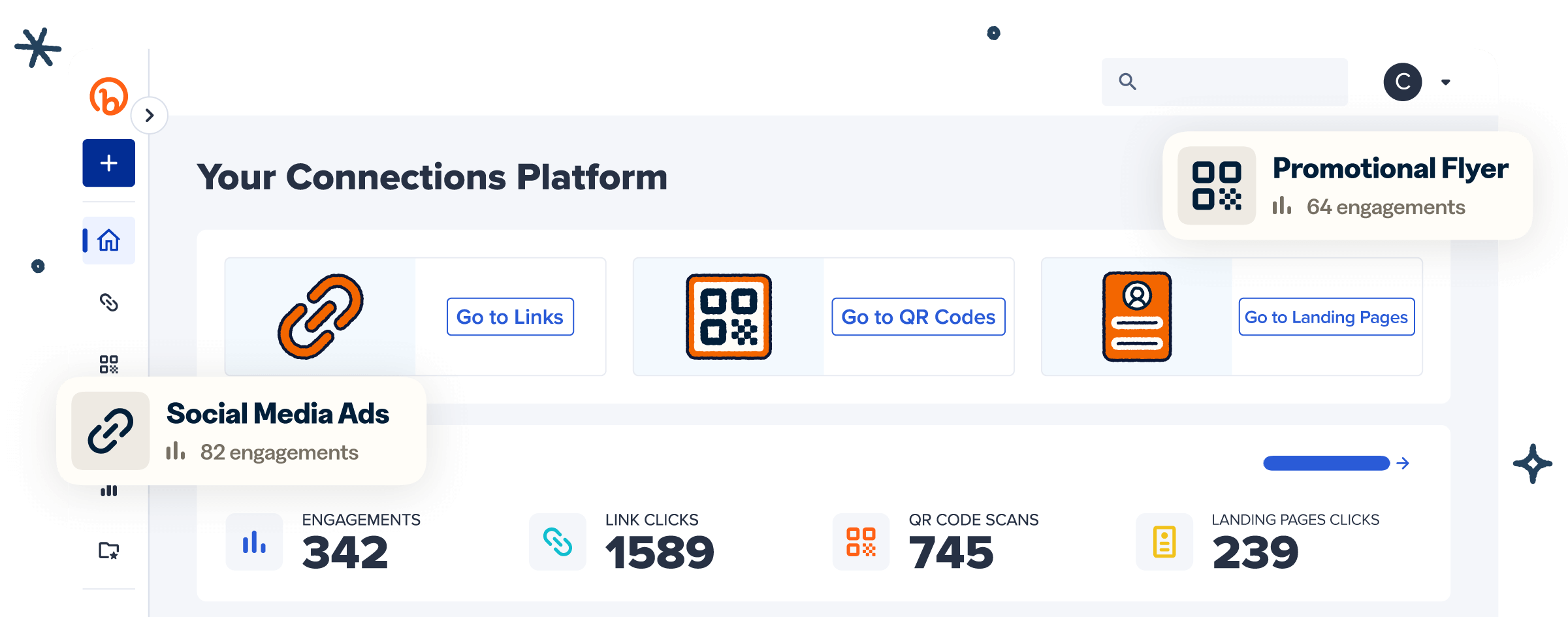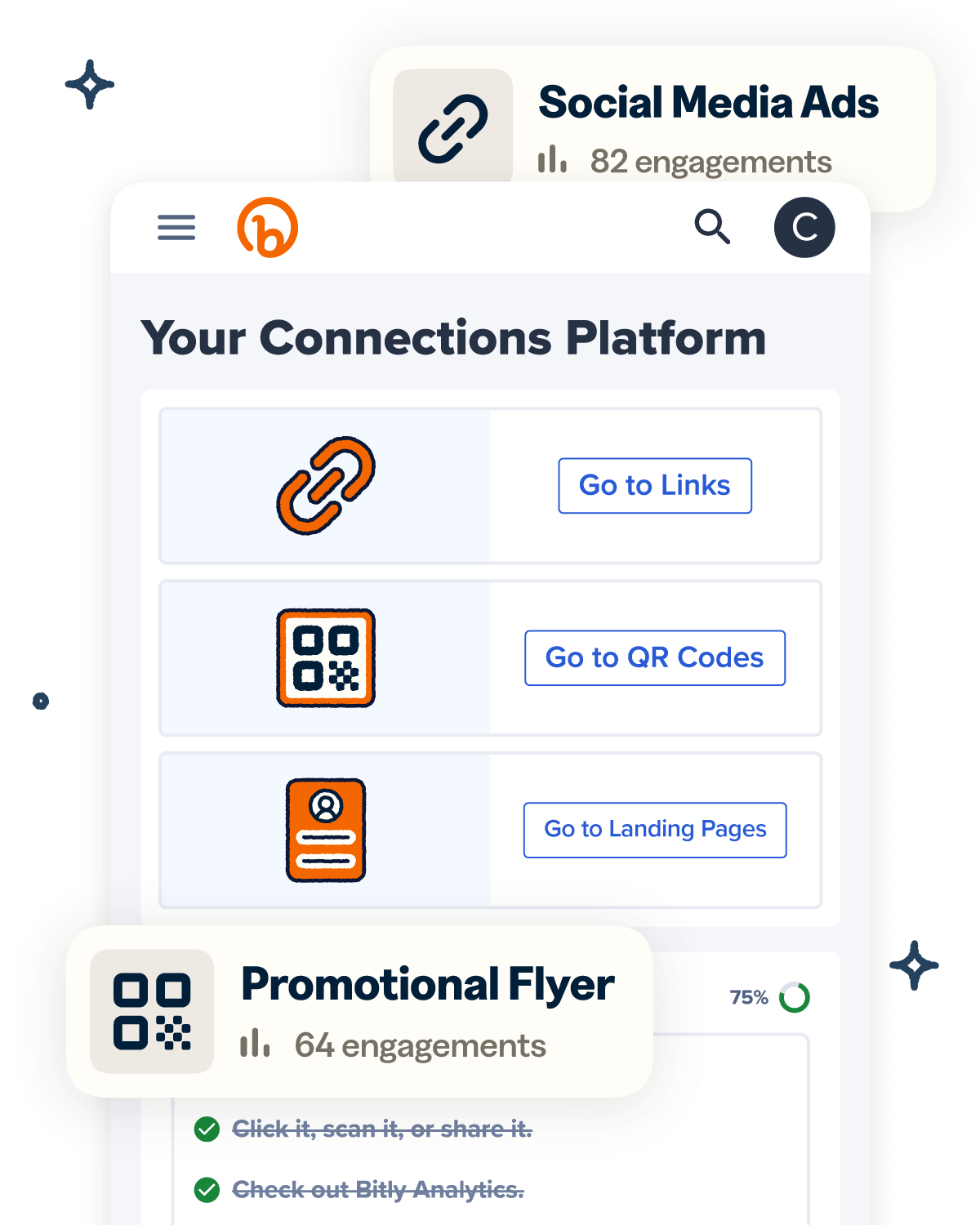Even in the digital age, print marketing is a reliable medium for engaging with your target audience. With the right print materials, you can reach new audiences and create unique, memorable brand experiences—especially when you use tools like QR Codes to bridge the gap between offline and online strategies.
Print ads combine striking visuals and persuasive copy to leave a lasting impression, while features like QR Codes can drive traffic to your website or social media pages for deeper engagement. This blog will help you understand all you need to know about crafting a successful print marketing campaign that works in today’s digital world.
Note: The brands and examples discussed below were found during our online research for this article.
What is print marketing?
Print advertising and marketing are traditional methods that rely on promotional materials that are distributed physically rather than digitally. Some common examples of print marketing materials include:
- Posters
- Brochures
- Newspaper and magazine ads
- Business cards
- Direct mailers
- Coupons
While print marketing sometimes gets overshadowed by its digital counterparts, it’s still a very popular and effective strategy. In fact, a study by the US Postal Service found that 77% of businesses use direct mail to drive website visits, showing just how effective print and digital strategies can be when used together.
Print assets are also highly effective for things like trade show marketing, as physical materials can help you stand out and keep your brand top-of-mind in a crowded, competitive space.
How print marketing complements digital strategies
Print and digital marketing strategies don’t have to be enemies—they actually work best when combined. By including digital features like QR Codes and branded links on your print marketing materials, you can make it easy for your audience to find your website and make a purchase.
Here are some examples of how this complementary relationship works for real-life businesses:
- Restaurant menus: Add a QR Code that links directly to a website for booking future reservations, making it easy for customers to connect.
- Hardware store flyers: Distribute flyers promoting new products with a short, branded link (e.g., hardwarestore.com/dailydeals) and a QR Code leading to the same page. This allows potential customers to access deals and shop online quickly.
- Haircare product labels: Include a QR Code sticker on products that links to a landing page with helpful resources like video tutorials and ingredient details.
- Real estate direct mailers: Use QR Codes on mailers to direct recipients to a landing page featuring virtual home tours, offering a convenient way to explore properties.
There’s lots to love about print marketing, even in the digital age. Print marketing materials like flyers, postcards, and brochures are tangible items that create a sensory experience, which can help build trust and credibility with your audience.
Additionally, many of today’s consumers are bombarded by digital ads. In the U.S. alone, brands spend nearly $390 billion on advertising, and over three-quarters of all ads are digital. Using print media to market your business is an easy way to stand out from the crowd and provide more balance for your audience.
On top of that, physical materials like posters, brochures, and business cards can be retained and saved, unlike digital ads. This means potential customers are exposed to your brand and messaging multiple times, creating a lasting impact and fueling brand recognition.
How to combine print marketing with digital strategies
There are many ways to combine print and digital marketing efforts to expand your reach. Here’s how you can combine these strategies to create a strong connection with your audience.
Use QR Codes to bridge print and digital
QR Codes are highly effective at bridging the print-digital gap. They turn static print materials into interactive experiences, which can lead to higher engagement levels and brand loyalty among your customers.
QR Codes are easy to scan with a smartphone camera, taking your customers to your digital assets in just seconds. You could add QR Codes on flyers that link to promotional landing pages or product pages or create a QR Code poster that links to an online registration page for upcoming events.
When you use Dynamic QR Codes, you can also update the destination URL as your marketing campaigns change. That way, there’s no need to reprint materials for each campaign you launch. All you need to do is update the URL for your campaigns so your flyers are up to date.
Add branded links for cohesive messaging
Another way to link your print and digital marketing materials is by strategically placing branded links on items like flyers and brochures. These are short, custom URLs that direct your audience to specific pages on your website to move them through the sales funnel.
Branded links are often more effective than standard URLs because they are short and easy to remember. A successful branded short link might look something like “brandname.co/offer.” Branded links also create an implicit call-to-action that sparks the reader’s curiosity, encouraging them to click and learn more.
Track print campaign performance with analytics
Integrating digital components like QR Codes and branded links into print materials allows businesses to track campaign performance with tools like Bitly Analytics.
These tools provide insights into QR Code scans and link clicks, helping measure audience engagement and determine the effectiveness of your print campaigns. This data makes it easier to refine strategies and make informed decisions for future marketing efforts.
For example, a clothing brand might add a QR Code to a print flyer that links to an exclusive online discount. They can use Bitly Analytics to track QR Code scans in real time and determine whether or not the offer resonated with customers.
The brand could even do A/B testing by creating two different offers, each with its own QR Code and flyer. Then, they could track and compare scans for each QR Code over time to determine which offer generated the most sales.
Create mobile-friendly landing pages
Pairing print material with a mobile-friendly landing page creates a positive and cohesive user experience. Landing pages allow you to provide more detailed information about your products and promotions than can fit on printed assets— you might even include videos to bring your products and brand to life.
Bitly Pages makes it easy to create mobile-optimized landing pages—no coding experience necessary. When you use Bitly Pages, you simply choose from a library of customizable templates and add your own images, copy, and other branding materials.
Best practices for successful print marketing campaigns
Want your marketing campaigns to have a bold impact? Follow these best practices to make your materials eye-catching, engaging, and inspiring.
Focus on clear calls-to-action
Print marketing can be very effective for generating awareness and directing traffic to your brand’s online presence. However, your audience needs to know how to get from your print ads to your website, which is where calls-to-action (CTAs) come in.
CTAs tell your audience how to interact with your QR Codes and branded links. While many people are already familiar with QR Codes, some of your audience might not be, so using a clear CTA ensures they know exactly what to do.
You might include a CTA that says “Scan here to claim your offer!” next to a QR Code on a coupon. For branded links, you could say something like, “Visit brandname.co/offer to check out our exclusive products!” Ultimately, the goal is to be succinct, clear, and action-inspiring.
Use high-quality branded visuals
Your digital and print materials should use similar brand elements to create a cohesive experience for your customers. You’ll want to use the same logos, fonts, and colors across all platforms and use a similar tone of voice in your copy as well.
Keeping the tone and visuals of your marketing materials consistent makes your brand identity stronger and more recognizable for customers. This cohesion also helps make your marketing materials more professional.
Many modern brands are returning to print catalogs to promote their products with eye-catching visuals. Browsing a catalog with high-quality photography and branded copy feels like a luxury experience, and some customers even enjoy collecting them.
One brand that continues to find success with modern printed catalogs is J.Crew, which creates stunning catalogs that feel like a fashion magazine. But the brand has also adapted its approach for the modern digital age—each catalog contains strategically placed QR Codes to make ordering easy.
Optimize QR Codes for mobile experiences
If you’re including QR Codes in your print marketing materials, it’s important to make sure they link to pages that are optimized for mobile devices, as most people use their smartphones or tablets to scan.
Mobile-friendly content should be designed for smaller screens with appropriate font and button sizes. It should also load quickly for convenience and near-instant gratification. Bitly Pages are fully optimized for mobile devices, making it easy to create successful landing pages without any complex coding or technical expertise.
Unlock the potential of print marketing in a digital world
Digital marketing strategies are constantly evolving and changing, but print marketing remains an effective way to reach your customers. Using tools like QR Codes, branded links, and mobile landing pages helps bring your print marketing strategy into the here and now, combining the timelessness of print marketing with digital innovation.
Through the Bitly Connections Platform, you can connect your offline and online campaigns to reach your customers in exciting new ways. Bitly tools—QR Codes, landing pages, and branded short links—are fully customizable to reflect your brand identity, plus you can track their performance with Bitly Analytics.
Ready to integrate your print and digital marketing campaigns? Sign up for Bitly today to get started.




